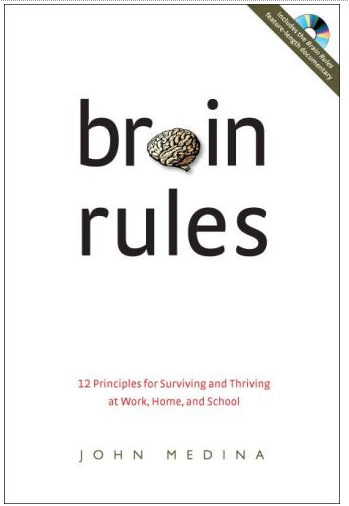Over the summer I cultivated my fascination with the human brain by reading a book by
John Medina, a developmental molecular biologist and professor in Seattle, Washington. The book, called
Brain Rules: 12 Principles for Surviving and Thriving at Work, Home, and School, was not only an interesting and enjoyable read, but Medina also gave me some ideas from his own classroom for presenting lessons.
A big part of Medina's book centers around human memory. He writes that people's attention spans typically start to wane after 10 minutes. Because of this, as well as because of the principle that people tend to remember things to which they are emotionally connected, Medina creates his lessons in 10-minute "modules." At the end of each module he not only repeats the main idea he has just covered (repetition is the key to remembering!), but he will also grab his students' attention with a personal anecdote or emotional bit of information. By doing this he can recapture his students' focus for the next 10 minute module
and reinforce what they have just learned.
In addition to talking about memory, Medina expresses frustration with the physical layout of the typical classroom. He believes that tables and desks facing the all-too-familiar podium is not the best structure for student learning. Because he brought it up, I got to thinking about how I would design my ideal classroom. Would it be small four-seat tables scattered around the room with whiteboard on all four walls? Or would it be a horseshoe shape of chairs so students would actually look at one another when addressing discussion questions? I couldn't come to a firm resolution, so I'm curious to hear from you:
What would your ideal classroom look like?
If you're interested to know what Medina says about
- keeping a healthy brain
- how we remember
- why multi-tasking is impossible, and
- the "Jennifer Aniston Neuron" (yep, you read that correctly!)
then check out
his book. And if you listen to the audiobook, be aware that Medina narrates it himself and his enthusiasm about the human brain is big and absolutely contagious!











